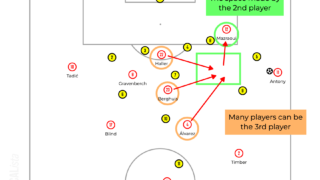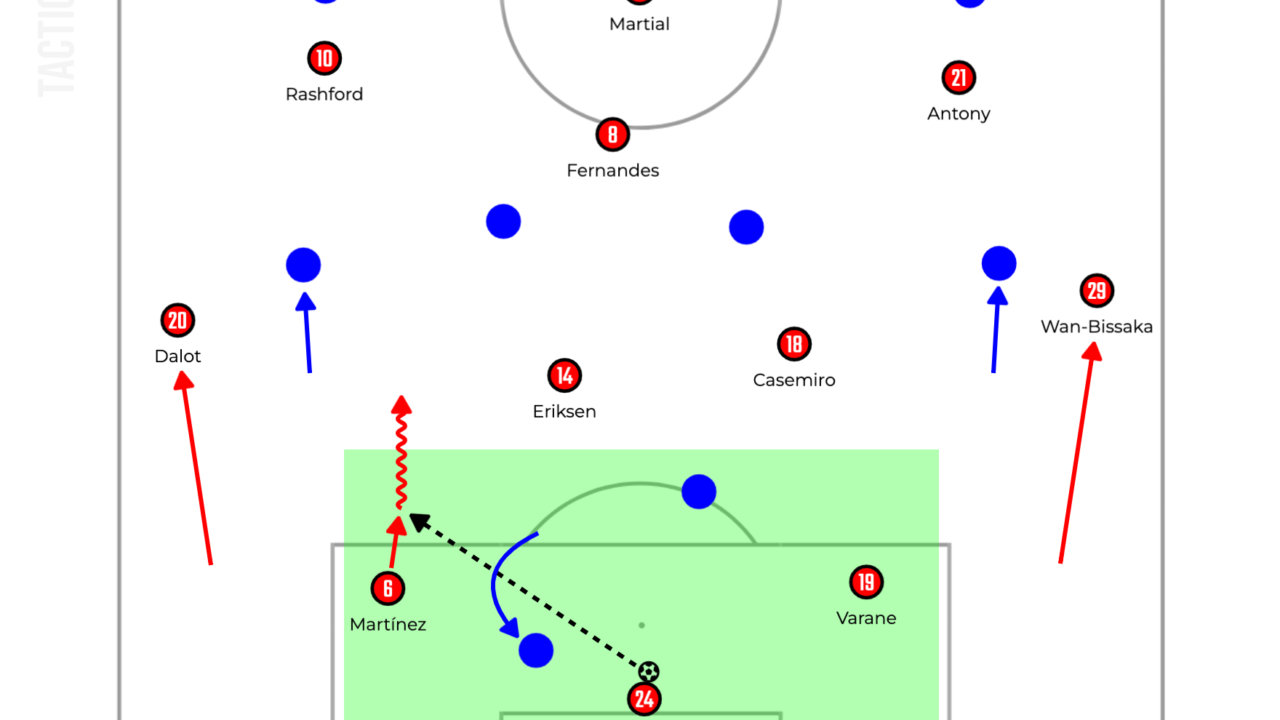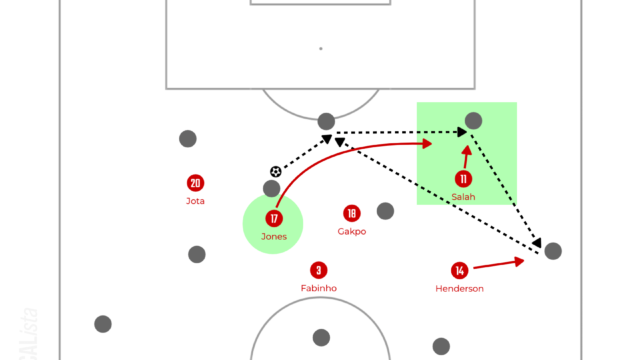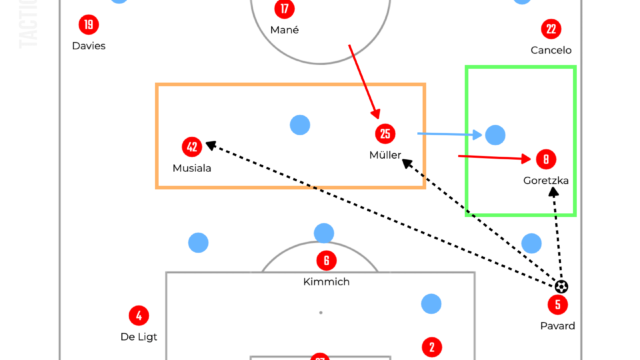Overview
Manchester United is not going well so far this season. In the first five games, even though they needed to face good teams such as Tottenham Hotspur, Arsenal and Brighton & Hove Albion, losing all of these three games was the possible worst scenario for Erik ten Hag.
In the summer transfer window, United could sign André Onana, Mason Mount or Rasmus Højlund, but it is difficult to say that they could strengthen the team so far. Onana has played an important role when playing out from the back, but the number of goals conceded is being criticised. It is fair to say that Mount unfortunately got injured and Højlund has only played two games, but worse than that, Jadon Sancho and Antony will not be available due to the reasons which are not related to football. This absence of wingers might influence on the selection of the team against Brighton, which United played with a 4-diamond-2 and miserably lost mainly due to the mismatch of the systems when pressing high. The selection might be related to tactical reasons, but it was unnatural to see ten Hag ignored the disadvantages of the system throughout most minutes of the game. Overall, therefore, the team was not strengthened well in terms of the quality and availability of players this season.
In terms of tactics, Onana’s influence on build up is huge. Erik ten Hag implemented a unique structure when playing out from the back thanks to Onana’s individual ability. After progressing the ball into the midfield, they have been able to establish the possession at the back with experienced defensive midfielders, Casemiro and Christian Eriksen, but sometimes they lacked solid options to break the opposition lines. In the final third, they have a dynamic attacking structure, but there is a problem of managing the opposition counter attacks.
The crucial reasons of their poor results are disorganised performances out of possession. Both when pressing and defending in the final third, they have given huge space to the opponents to exploit. This cannot be discussed by only tactics because the intensity of pressing on the opponent on the ball can be highly influenced by their mental state or physical factors.
In this article, the reason why Erik ten Hag could not get positive results from the beginning of the season is going to be discussed based on the overarching analysis of Manchester United this season so far.

Build up
When playing out from the back, ten Hag made a quite interesting routine. The right centre back Raphaël Varane steps up into the midfield from the ordinary position next to Onana as soon as a goal kick is restarted. Even when Onana receives the back pass from one of his teammates, not only Varane but also the left centre back Lisandro Martínez sometimes position himself in the midfield. This role can be played by Victor Lindelöf as well, so it is possible to consider this as a tactic as a team.

The key of this tactic is the deep positions of the fullbacks. Thanks to the position of the centre back in the midfield, the opposition forward player tends to be pinned in the middle to keep marking the centre back. Then, if the fullback dropped back deeper, the opposition wide player needs to step up to press, leaving the huge space behind him, which can be used by one of the midfielders drifted outside.
Another method is simpler by maximising the ability of Onana. One of the disadvantages of the tactic explained above is that it invites the opposition high pressure and makes the ball side area congested, which is favourable for the opposition to win the ball. Not many teams possess the same ability as Brighton to beat the opposition pressing. The better way is using the pitch big to be away from the opposition pressure.

In contrast to the first tactic, they push both fullbacks higher to draw the opposition wide players away and keep the area around the ball clear. In this situation, the opposition striker would press Onana with cutting the passing lane to one of the centre backs, but thanks to the huge space, Onana can play the ball into the space to bypass the opponent. Additionally, most opponents are pinned in the midfield due to the high positions of United players, so they cannot easily step up to press on the centre back who drives forwards. Therefore, United can safely progress into the midfield without being pressed aggressively and collectively.
Additionally, thanks to the double pivots, Eriksen and Casemiro who can provide options to play through, the centre backs often receive the ball outside of the opposition 1st line. This is because the opposition strikers need to screen the passing lanes to the defensive midfielders, so they position themselves narrower. Moreover, especially Eriksen knows when to drop to receive the ball from Onana, which also makes it easier to deliver the ball to one of the centre backs by using him as a third man.
In the midfield, Erik ten Hag prefers to tweak the shape and it turns into a back three system. However, it is so flexible and the way to form the back three is multiple.
The first pattern is pushing one of the four defenders into the midfield. Usually, it was Luke Shaw, Diogo Dalot, Lisandro Martínez or Victor Lindelöf, who play mainly as either of the left fullback or left centre back and one of them played next to Casemiro to form double pivots.
However, since they began to prefer the shape which pushes both fullback higher when playing out from the back and Eriksen replaced Mount in the defensive midfield, the shape has been changed, but it still looks like a back three. Unlike the first pattern, both fullbacks are positioned higher and the defensive midfielders often dropped into the back line to form a back three.

It is not always a 3-1 shape at the back and it sometimes can be a 2-2 shape when no defensive midfielders drop into the back line. These defensive midfielders are flexible and adjust their positions depending on situations. These four players are capable of keeping the possession at the back, but they often have not found solid options to play through or around the opposition midfield line.
In the midfield, they often use long balls to play over or switch the ball diagonally, but especially the long balls in behind are not accurate and often resulted in losing the possession.
In order to find a passing lane to play through, some of the attackers up front need to drop back to be in between the lines. The strikers such as Marcus Rashford and Anthony Martial can drop back to receive a split pass, but the next action of them is often making extra touches and playing back. This is one of their main combinations in the final third, but generally it does not help the team and the ball to progress. So, due to the lack of players who can turn and face forwards in between the lines, they have hardly found an option to play through so far.
Final Third Attacking
In the final third, thanks to the ability of Martínez and Varane to keep and control the ball at the back, United can put many bodies in the higher area of the pitch. Especially, the right fullback Aaron Wan-Bissaka often plays like a winger and he is capable of running in behind and even taking on the opposition fullback. Considering the absence of Antony, if he can play like a winger consistently, it is possible for ten Hag to have another option to play with a system which does not have natural wingers such as a 4-diamond-2 against Brighton.
As it was already mentioned in the previous chapter, due to the lack of the players who can receive the ball in between the lines, the attacks from wide areas are the main option for United. As soon as the winger receives the ball in a wide area, one of the teammates makes a run into the channel. This is one of their main principles in the final third and the trigger of the combination in wide areas.

Thanks to the movement, it is possible to create a space in between the lines by dragging one of the opposition defensive midfielders. Then, the third player is picked up to play a one-two to break the opposition back line. And variety of the players who can be the third player is one of ten Hag’s favourable tactics and even Casemiro can step up to join the combination in a wide area.

However, this can be one of their weaknesses in the final third. Because of the absence of Casemiro or other midfielders in front of the back line and too many players in the higher area of the pitch, they are fragile in the transitions.

When the opposition wins the ball and plays to an attacker in the hole of the shape of United, one of the centre backs often steps up to apply pressure on the opposition player on the ball. If it was successful, there is no problem, but in case the opposition managed to beat this pressure, there are often only two or three defenders to defend this counter attack and it is a great chance for the opposition. In terms of the relationship between the risk and reward, it is fair to say that the risk is greater than the reward at the moment due to the lack of intensity around the ball in the transition to win the ball higher.
Even though they could hardly play through the back line in the middle, they seem to have an aim to play through. As it was mentioned in the previous chapter, United’s attackers hardly receive the ball and turn forwards in between the lines. Rashford sometimes shows a brilliant skill there, but it is quite rare to see and his favourable position looks like a winger with huge space to attack. Even though they do not have players who can keep the ball in between the lines, they seem to try one-touch football in the middle.

The great example was 53:40 against Arsenal. They played a beautiful combination to exploit the gap in the opposition back line made by dragging the centre back out. This combination can be a key factor for ten Hag’s side to be more effective in the final third and produce more goals.
Pressing
The problem for United right now is the disorganised defending. It was a disaster for them to lose against Brighton in that manner. In this chapter, their pressing is going to be analysed in detail.
Their shape can be a 4-2-3-1, 4-1-4-1 or 4-diamond-2, but one of the common principles does not change, which is accepting the underload up front and maintaining their shape rather than marking all players. This style is similar to Arteta’s Arsenal, so please have a look at the discussion of advantages or disadvantages in the article below.

By accepting the underload up front, the opposition can have at least two spare players to rest the ball. Therefore, United’s pressing becomes passive even though they try to apply pressure on the opposition goalkeeper.
Another principle is pressing on the opposition goalkeeper or centre back on the ball with showing the outside. No matter what the system is, one player applies pressure on the ball and one or two attacking midfielders mark the opposition defensive midfielders tightly to prevent the opposition from playing through the middle.

The aim is locking the opposition in wide area and marking the opposition players tightly in the ball side. However, the centre back on the ball can sometimes switch the ball by beating the first press. In this case, the opposite winger jumps and applies pressure on the ball.

This aggressiveness is great and it is often resulted in forcing the opposition to play long. However, the problem occurs after the long balls are kicked.
The defenders tend to mark the opposition attackers so tightly, so if the marker dropping back, the defender often follows the movement. If the defenders always win the duel, there is no problem. However, if losing the duel, the opposition can play a fast attack and it happens a lot for United. In addition to this, the opposite defenders or defensive midfielders focus on marking the opponents too much, so the covers after one of the defenders lost the duel are also too late because they are too far away. Therefore, the lack of collectiveness at the back is one of the crucial problems for United at the moment.
Overall, the pressing up front is not bad except the game against Brighton, which was caused by the mismatch of systems, but more importantly, the back line is not solid enough after forcing the opposition to play long.
Final Third Defending
Worse than the pressing, the defensive structure in the final third is not organised well. Their shape is vertically compact but horizontally stretched. Like the pressing, the gaps between the back line are huge and the midfielders are disorganised because they focus on marking the opponents too much and the opposite midfielders are often late to narrow in.

As a result, the space in front of the back line is open and the centre backs are easily exposed. Against Brighton and Arsenal, the opposition easily progressed the ball into that crucial area and scored goals. However, only centre backs have been criticised, but the problem is not only that. It is unreal to see the centre backs are exposed so much. Due to the lack of the protection of the midfielders, the centre backs need to cover huge space. They need to follow the striker dropping back, which can create a gap in the back line.
Another reason of the huge space in front of the back line is the way to defend wide areas. The ball side fullback jumps to the opposition wide attacker, and the defensive midfielder covers the space between the fullback and centre back.

This leaves the space in front of the back line, but it should be covered by the opposite midfielders. However, as it was mentioned earlier, they often delay shuffling over and the space cannot be covered well, exposing the centre backs.
Additionally, this tactic helps the centre backs to stay in front of the goal to deal with crosses. Especially, the near centre back can protect the space at the first post and this is extremely important. However, Martínez could not defend the space well against Tottenham and conceded the first goal. Moreover, the opposite defenders tend to mark the opposition attackers in the box, which is not a problem if it is performed well, but this opened up the space in front of the goal against Tottenham. It is just a preference of the manager whether defending crosses zone or man oriented style, but it should be noted that they conceded three goals from crosses in the five games (two against Tottenham and one against Brighton).
Overall, the miserable defending is the most important problems for United right now and some of them can be attributed to individual efforts. This can be a reason for a manager to be sacked, so Erik ten Hag is in danger. Even though they could not strengthen the team well in the summer transfer window due to the injuries or personal problems, but it is going wrong for him right now. Thanks for reading. I hope you enjoyed this.



